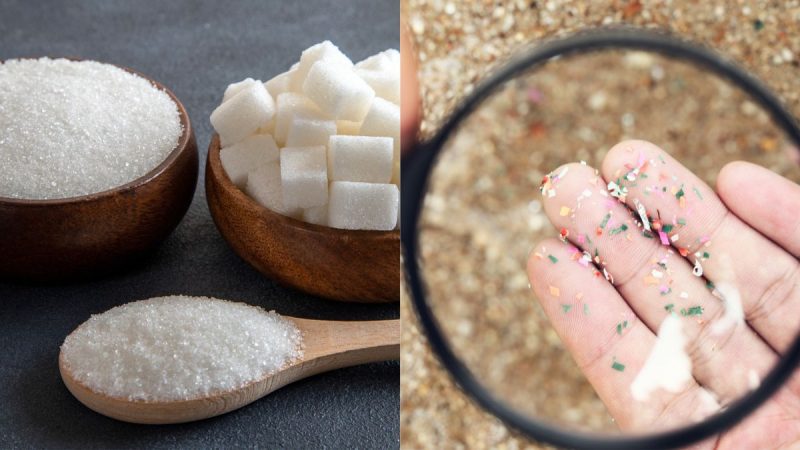A recent study reveals that all Indian salt and sugar brands contain microplastics. The study, titled “Microplastics in Salt and Sugar,” was conducted by Toxics Link, an environmental research organisation. The findings were made public on Tuesday and raised significant concerns about the safety of widely consumed food products in India.
All Indian Salt & Sugar Brands Have Microplastics
Researchers from Toxics Link tested various types of salt and sugar, including table salt, rock salt, sea salt, and local raw salt, as well as different forms of sugar. The samples were purchased from both online and local markets to ensure a comprehensive analysis. Disturbingly, microplastics were detected in every sample, regardless of whether the products were branded or unbranded, packaged or unpackaged.
The microplastics discovered in the samples varied in form, including fibres, pellets, films, and fragments. These particles ranged in size from 0.1 mm to 5 mm, making them easily ingestible. The study revealed that iodised salt contained the highest levels of microplastics, particularly in the form of multi-coloured thin fibres and films. In contrast, organic rock salt showed the lowest concentration of these pollutants.
A Growing Global Concern
The report provided detailed data on the concentration of microplastics in the tested samples. In salt, the concentration ranged from 6.71 to 89.15 pieces per kilogramme of dry weight. Iodised salt had the highest concentration, while organic rock salt had the lowest. In sugar samples, the concentration of microplastics ranged from 11.85 to 68.25 pieces per kilogram, with non-organic sugar containing the highest levels.
The presence of microplastics in salt and sugar is a growing global concern. These tiny plastic particles can enter the human body through food, water, and air, leading to potential health risks. Recent studies have detected microplastics in human organs, including the lungs and heart, and even in breast milk and unborn babies.
Also Read: Chandigarh Bans Single-Use Plastic From July 1; Municipal Corporation Sets Fines As High As ₹10,000
Given the average Indian’s daily consumption of salt and sugar, the findings of this study are particularly worrying. Previous research indicates that Indians consume 10.98 grams of salt and around 10 spoons of sugar each day. This far exceeds the World Health Organisation’s recommended limits. The presence of microplastics in such commonly consumed products underscores the urgent need for further research and immediate action to address this emerging threat to public health.
Cover Image Courtesy: Canva (Representative Image)
For more such snackable content, interesting discoveries and the latest updates on food, travel and experiences in your city, download the Curly Tales App. Download HERE.

